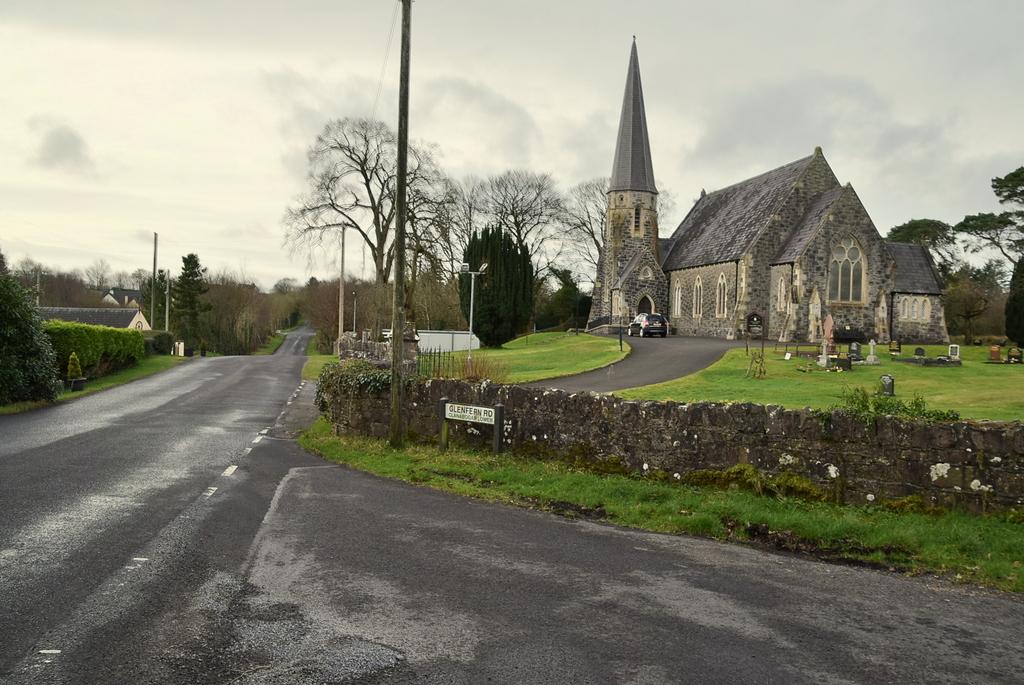St Columba
Omagh, County Tyrone
A triple height Gothic Church of Ireland church, built between 1863-1871 to designs by architect JE Rogers of the Church Commissioners in Dublin.

Gothic Revival church, built 1863 to designs by Welland and Gillespie, with interior by Thomas Drew c1889.
Clanabogan, County Tyrone
The High Victorian interior is of particular interest with memorials, ornately detailed marble and mosaic tiles. The church organ dates from 1863.
Clanabogan parish church holds open church services each Sunday which remain popular with the community. Members of the congregation who are unable to attend church are visited by the clergy throughout the year. The parish has a wide range of organisations and Trustees would like to acknowledge their appreciation for those who give freely of their time to volunteer in these organisations. A number of social events are held.
Omagh, County Tyrone
A triple height Gothic Church of Ireland church, built between 1863-1871 to designs by architect JE Rogers of the Church Commissioners in Dublin.
Omagh, County Tyrone
A modern church with a striking interior, the church is noted for its vertical stained glass windows.
Glenock, County Tyrone
Amid scenic country views, this is an important and early Catholic church which has an impressive external design, an intimate and authentic interior and a unique story from construction in stages from a simple rectangular structure in 1785 to housing the bell which was the first one to ring out in the diocese since penal times ahead of the bell at Armagh Cathedral.